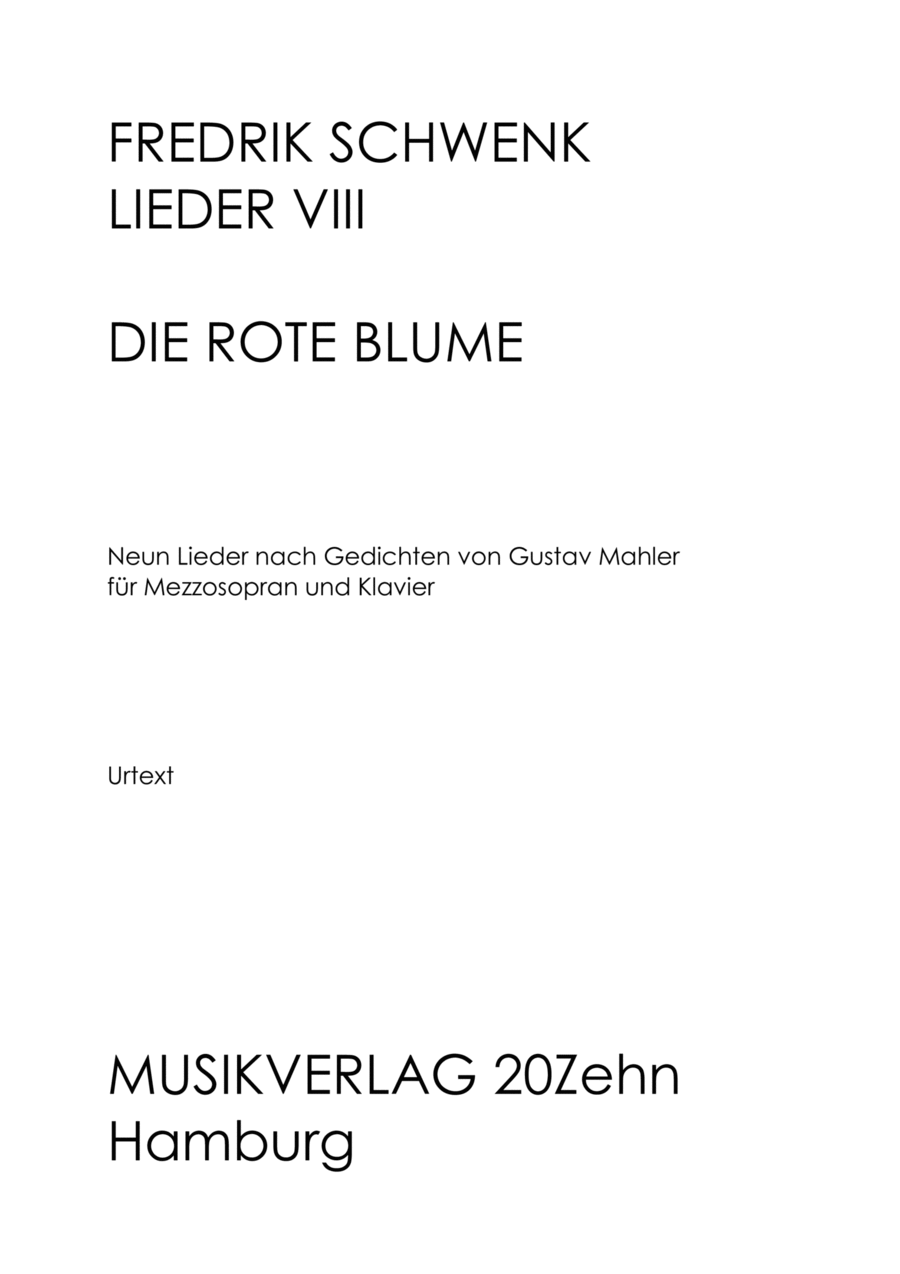Piano,Vocal,Voice - Level 4 - Digital Download SKU: A0.1022048 Composed by Fredrik Schwenk. 20th Century,Contemporary. Score. 51 pages. Fredrik Schwenk #6319871. Published by Fredrik Schwenk (A0.1022048). The nine songs after poems by Gustav Mahler (1860-1911) were commissioned by the Dutch mezzo-soprano Christianne Stotijn. Mahler was already planning a late Romantic cantata entitled Das klagende Lied shortly after beginning his studies at the Vienna Conservatory in 1878, for which he conceived a three-part cycle of poems for his own setting. When Mahler completed the score in October 1880, he was already at the beginning of a great conducting career. The quality of the poem could be debated, especially in view of the successful Lieder eines fahrenden Gesellen from 1883 and 1884; and yet the ballad, inspired by a mixture of fairy tales by the Brothers Grimm and the poet Ludwig Bechstein, reflects almost the complete range of voices of Mahler's first great creative period, from the songs from Des Knaben Wunderhorn to the Fourth Symphony. At the special request of mezzo-soprano Chrisianne Stotijn and pianist Joseph Breinl, the complete text of the plaintive song was newly set to music. A particular challenge of the new setting of Gustav Mahler's poems consisted for me above all in compromising the genial imperfection of the poetry with a compositional aesthetic that emphasizes precisely the unrhymed, edgy and clichéd as its own quality and does not seek to conceal it. In doing so, it seemed wise and prudent to me, not only for reasons of historical distance(ization), not to implement an intersubjective subjectability to the songs. The serious and ballad-like basic tone was to be preserved, the way in which the text was implemented stems from the idea of a thoroughly pluralistic and therefore stylistic tightrope walk, which in a kind of music about music reflects the relationship to one's own tradition and its changing values and thus repeats the phenomenon of Mahler per se in the context of the 21st century.
